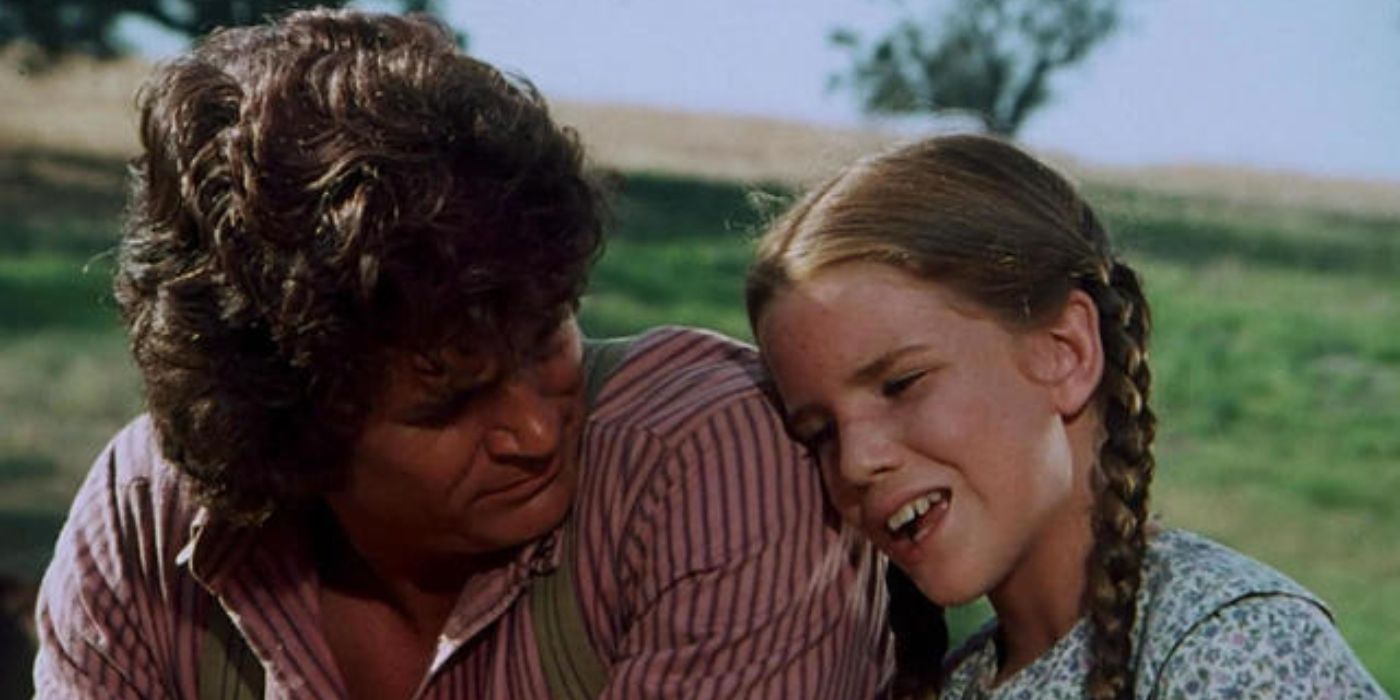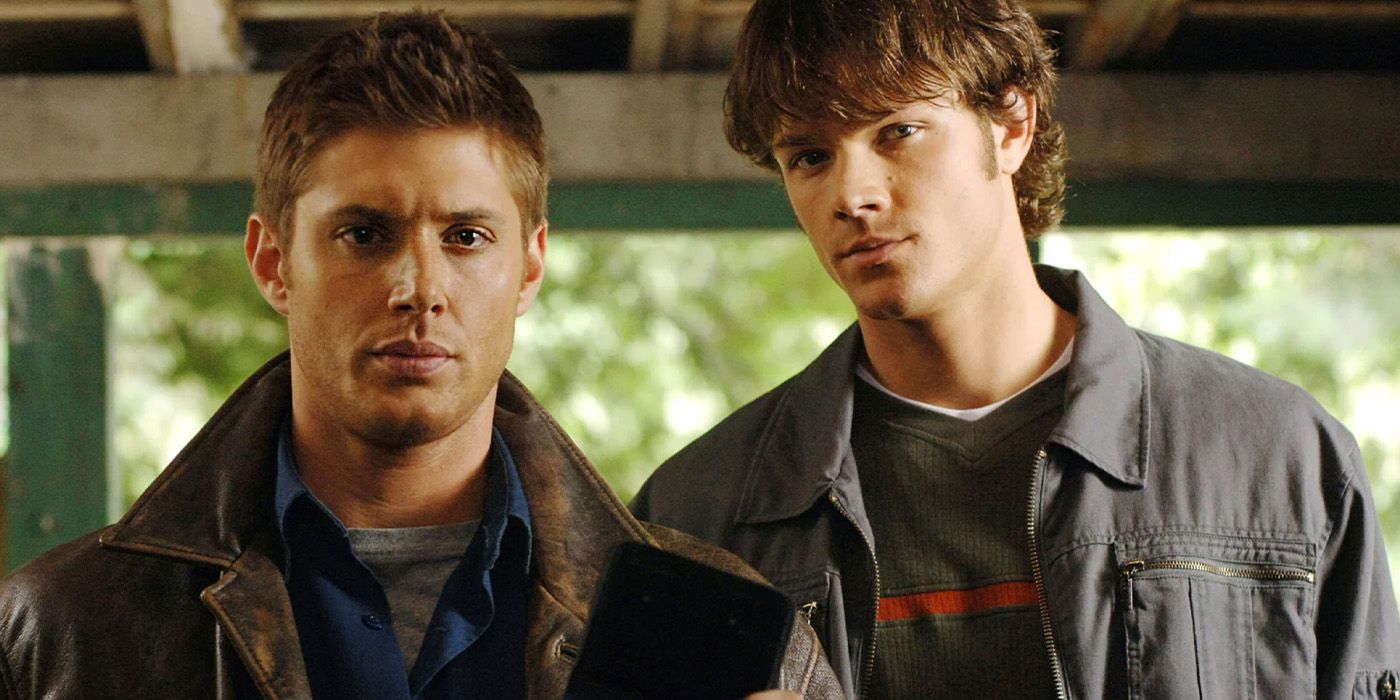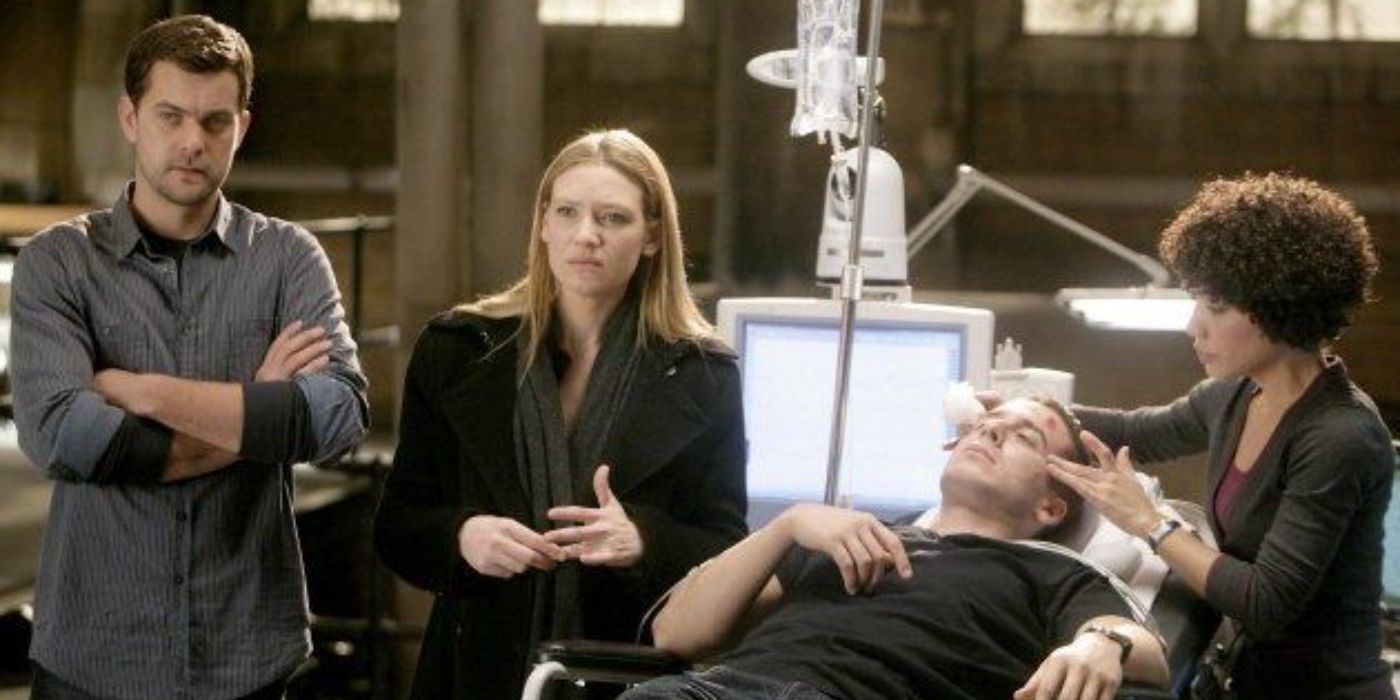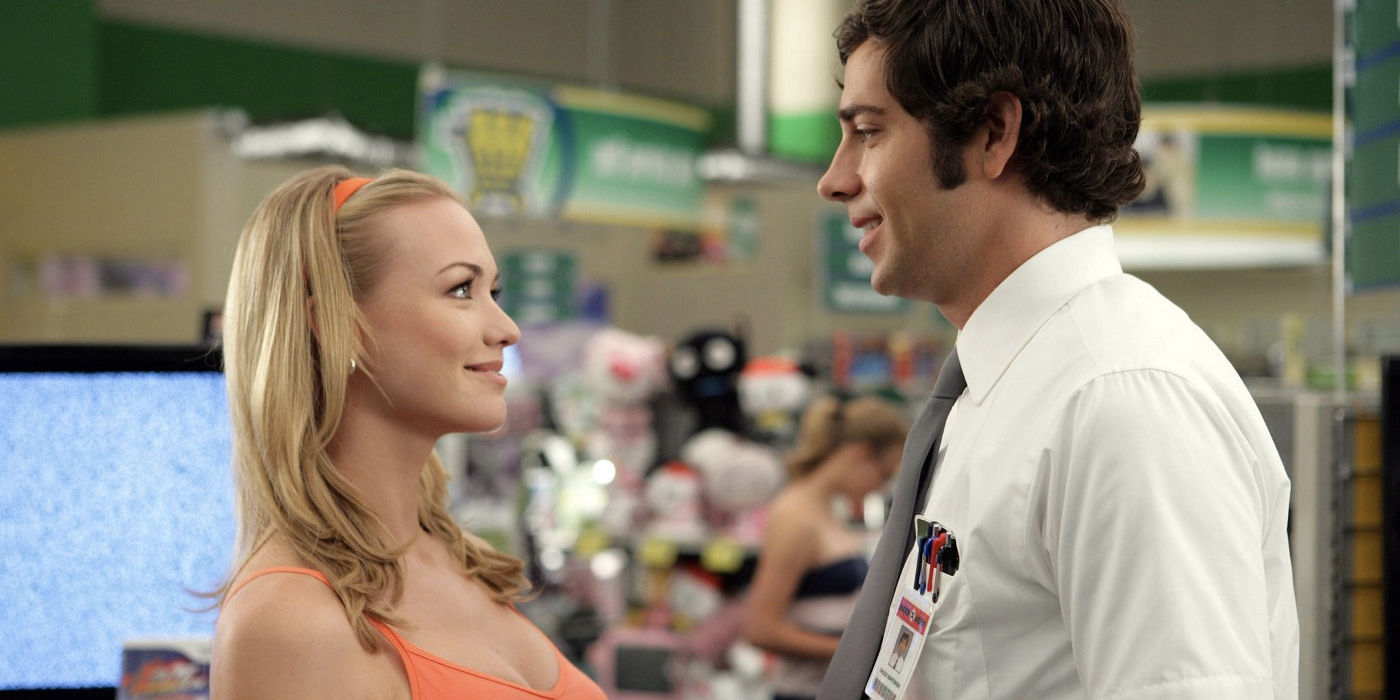In our streaming age, it's easy to take a look at "filler" episodes and criticize them as a product of their time. Many now consider these very same standalone episodes to be nothing more than an unwanted break in the narrative, a break that doesn't actually add any real value to the story or characters. Nothing could be further from the truth. Frankly, the "filler" episode is a lost art, one that needs to be recovered because of its contributions to the television industry. One of the biggest criticisms of the "filler" episode is that it can disrupt the narrative flow. When a show's seasons are only 6–10 episodes long, this is actually a fair point. But just because not every show needs standalone episodes doesn't mean these "fillers" don't have their place in the world of television. If anything, we need to appreciate them for what they have to offer.
"Filler" Episodes Make Television Memorable
Image via Fox
For shows like Outer Range, The Haunting of Hill House, or House of the Dragon (which are made with a binging audience in mind), removing the "filler" episode makes perfect sense. These sorts of streaming shows thrive because of their binge-ability, something that goes down when too many standalones are thrown in the mix. This could be why audiences considered the Stranger Things Season 2 episode, "The Lost Sister" (a fine episode on its own), the weakest of that batch since it derailed the anticipation built up by previous episodes. But when it comes to long-form shows—those on television networks that make anywhere from 12 to 24 episodes of said series per year—it's the "filler" episodes that are their bread and butter. Not only do these episodes allow the writers to break up the plot and give audiences some breathing room between shocking revelations or character decisions, but they also open the door for other stories to be explored within the confines of their respective fictional universes—stories that wouldn't otherwise fit into the narrative structure.
How many X-Files episodes had the chance to explore what Dana Scully (Gillian Anderson) does apart from Fox Mulder (David Duchovny) because of its 20+ episode format (including Stephen King's one-and-done contribution)? The show was always at its best when it leaned more into the "monsters-of-the-week" rather than focusing too hard on the mythology. The alien angle might've pulled audiences in, but we all stayed for Mulder and Scully. Or think of how, despite its quick cancelation, a show like Firefly continues to stand out because of the pictures it painted through famous standalone episodes like "Jaynestown" or "Shindig"? TV procedurals such as NCIS, Criminal Minds, and Law & Order live off of these types of weekly adventures, which focus rather on layering and developing well-rounded characters than forcing a complex story. This is why shows like Fire Country and Tracker are still being made today, and why we love them.
This isn't to say that an overarching story isn't important for a successful television show, or that steaming shows have shallow characters. Not at all. All the aforementioned examples have their own multi-season arcs and mythologies that expand their story potential. Even Firefly, which only ran for a single season, had its own complexities involving the creation of the Reavers and the experiments done on Summer Glau's River Tam, which would be continued via Serenityand subsequent comic books. But the standalone "filler" has the opportunity to do what a standard mytharc episode cannot: play with a character's motivation and decision-making through unique one-and-done plots. By placing these characters in situations or circumstances that they otherwise might not find themselves in, we explore other facets of who they are while they celebrate, grieve, struggle, or, well, fill in the blank. "Filler" episodes fill the television space with rich character drama that reminds us why we started watching the show in the first place. They expand on that love and devotion by giving us something different from "the usual."
Standalone Stories Open Up Opportunities for Side Characters
Image via The WB
Part of that "different" sometimes comes from emphasizing characters whose perspective might not otherwise be given the time of day. Though he was always a main character on Buffy the Vampire Slayer, very few episodes actually take place entirely from Xander Harris' (Nicholas Brendan) point-of-view. One of Buffy's all-time greatest hours has absolutely nothing to do with the general Season 3 plot: "The Zeppo." This episode throws Xander into an unlikely (and deadly) situation while the rest of the Scooby Gang does their usual Tuesday night ritual (saving the world). Xander's dire circumstances force him to grow a pair himself and be the unlikely hero, a hero who doesn't even get credit in the end for his own apocalypse-ending contributions. "The Zeppo" gives Xander the confidence he needs to continue through high school and recognize his own function on the team. This sort of episode would be impossible in a serialized show, but it proves itself time and again as one of Buffy
Supporting or side characters can often fall into the trap of being characterized by their place alongside the main hero. When a show becomes all about the main character(s) and their ambitions/goals/destiny, other important players can fall through the cracks. "Filler" episodes allow these characters to be explored in greater detail, and give us a deeper appreciation for their part in the story. Even when those characters are appreciated and beloved by fans after multiple seasons, getting an episode for themselves can help us love them even more. The Supernatural episode "Weekend at Bobby's" does just that when Bobby Singer (Jim Beaver) spends the entire episode helping the Winchester brothers from afar, trying to maintain a "normal life," and attempting to save his mortal soul. It's a compelling (and complete) episode not just because it's fun to watch Bobby wander through his life, but because we now finally understand how much he supports our heroes and others like them.
Of course, shows about monsters, demons, and ghosts don't have a monopoly on the "filler" episode. Do you remember Chuck? The Zachary Levi-led dramedy about the computer nerd with an even bigger government-issue computer trapped in his head? This spy-fueled series was a blast for a lot of reasons, but partially because of its hilarious and fun standalone adventures. "Chuck vs Tom Sawyer" is a perfect example of an hour centered entirely around a side character (in this case Scott Krinsky's Jeff Barnes), and did so in a creative and meaningful way. It didn't change Jeff's place on the show, but it did give us as an audience a different perspective on why the strung-out Nerd Herder has been wasting his life away at a Buy More for the past 20-ish years, all while elevating him as an important part in that week's narrative. By opening the door for side characters, fans not only grow more attached to them, but also to the entirety of the show, which has now proven that it too cares for these often forgotten or maligned personalities.
Some Shows Thrive Best When "Filler" Is the Norm

Image via NBC
There's also an argument to be made that some shows are just better when they consist of largely standalone episodes. This was once the norm for television dramas of yesteryear. Shows like Gunsmoke, I Love Lucy, M*A*S*H, and Little House on the Prairie all excelled simply because audiences could tune in for any episode and not be lost. The Andy Griffith Show was so standalone in nature that it ended with a backdoor pilot to a show that would later continue the main show's story. Nowadays, you can't just start a narrative like Game of Thrones or Succession halfway through without the context of prior seasons. Even for a series like Yellowstone, where the characters themselves rarely change, that additional context is still necessary. With older programs, where "filler" episodes filled basically the entire space, you didn't have to worry about instantaneous and long-lasting changes. Save for instances where certain characters were written off or others became blind (looking at you Little House), the status quo remained the same for years. This is why police procedurals can run successfully as long as they do, even if they're becoming more serialized with time.
We mentioned CBS's latest drama Tracker before, and it's true that the Justin Hartley-led series feels like something of an anomaly these days. It's popular despite the fact that nearly every episode features a new location and a new set of side characters, with only Colter Shaw (Hartley) and his team recurring. But because of Tracker's initial premise—a rewardist who travels the United States in search of people or things deemed missing—it works. Yes, there's a mythology building slowly in the background, but that's never been the show's (or the character's) main focus. Grey's Anatomy still thrives on this model, as do many medical shows. In fact, many popular network dramas from the early 2000s era, such as Gilmore Girls, Dawson's Creek, The O.C., One Tree Hill, and more, exemplify the use of these sorts of episodes as their standard. This extends to genre shows too, as Smallville, Stargate SG-1, and Charmed all began with our heroes dealing with standalone "monsters-of-the-week" plots that set the stage.
Today, a show like Superman & Lois might spend a fair amount of time with its leads searching for or battling the season's main villain (and, indeed, the plot demands it), but back in the early days of the Superman prequel Smallville, anything could happen every week. Case in point, the Season 1 episode "Stray" was so well-received that guest star Ryan Kelley was brought back for a follow-up the following season. This sequel episode, itself another standalone, pushed Clark Kent (Tom Welling) closer to becoming Superman despite not contributing to the show's mythology. It's an episode that wouldn't fit so well on Superman & Lois given its structural limitations, but worked wonders on Smallville, at least when it started. It helped that the show had more episodes than the plot knew what to do with. This was part of Smallville's initial charm that drove audiences to the teen sci-fi drama, and kept them around by the time it grew into a full-fledged superhero show.
Standalone Episodes Have the Most Potential to Become Fan-Favorites






There's no doubt that the "filler" episode has massive potential. When Fringe started, the series felt like a spiritual successor to The X-Files in its commitment to standalone pseudo-scientific mysteries. The first two seasons are rife with largely "filler" plots that paved the way for Olivia Dunham (Anna Torv) and Peter Bishop (Joshua Jackson) to fall in love. Without the context of those unique cases, their love story wouldn't have been as sound, nor would Fringe be anywhere near as interesting. Though its final season became serialized in an effort to close the series effectively, it's those "filler" cases that still stand out as the show's best. The same could be said for the neo-Western drama Longmire (see "Dog Soldier" or "Unfinished Business"), and even the sitcom Community, where classics like "Remedial Chaos Theory" and "Advanced Dungeons and Dragons" remain the show's best and brightest. And let's not forget how beloved Supernatural's "Mystery Spot" and "Yellow Fever" have become, solely because of their respective wacky, character-driven premises.
There are countless examples that we could highlight to remind fans why "filler" episodes aren't just "filler," but the main point is this, for a television series to last long-term, you need to give your characters room to grow. Standalone episodes, divorced either entirely or in part from the main plot, give characters that outside growth they need in order for the fans to connect to them on an emotional level. The plot matters only as much as your characters do, and "filler" episodes often do the best job of reminding us that.















































































































